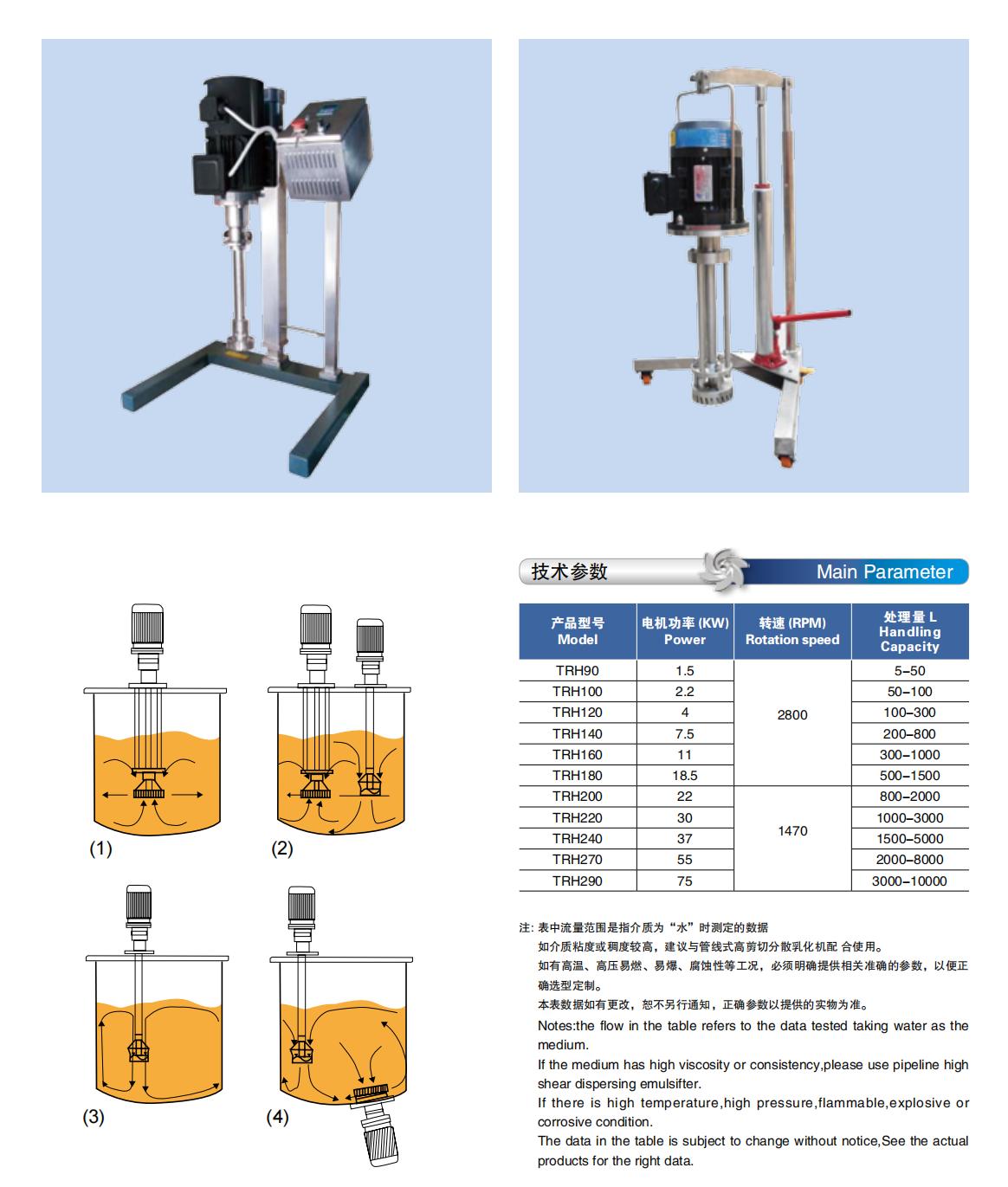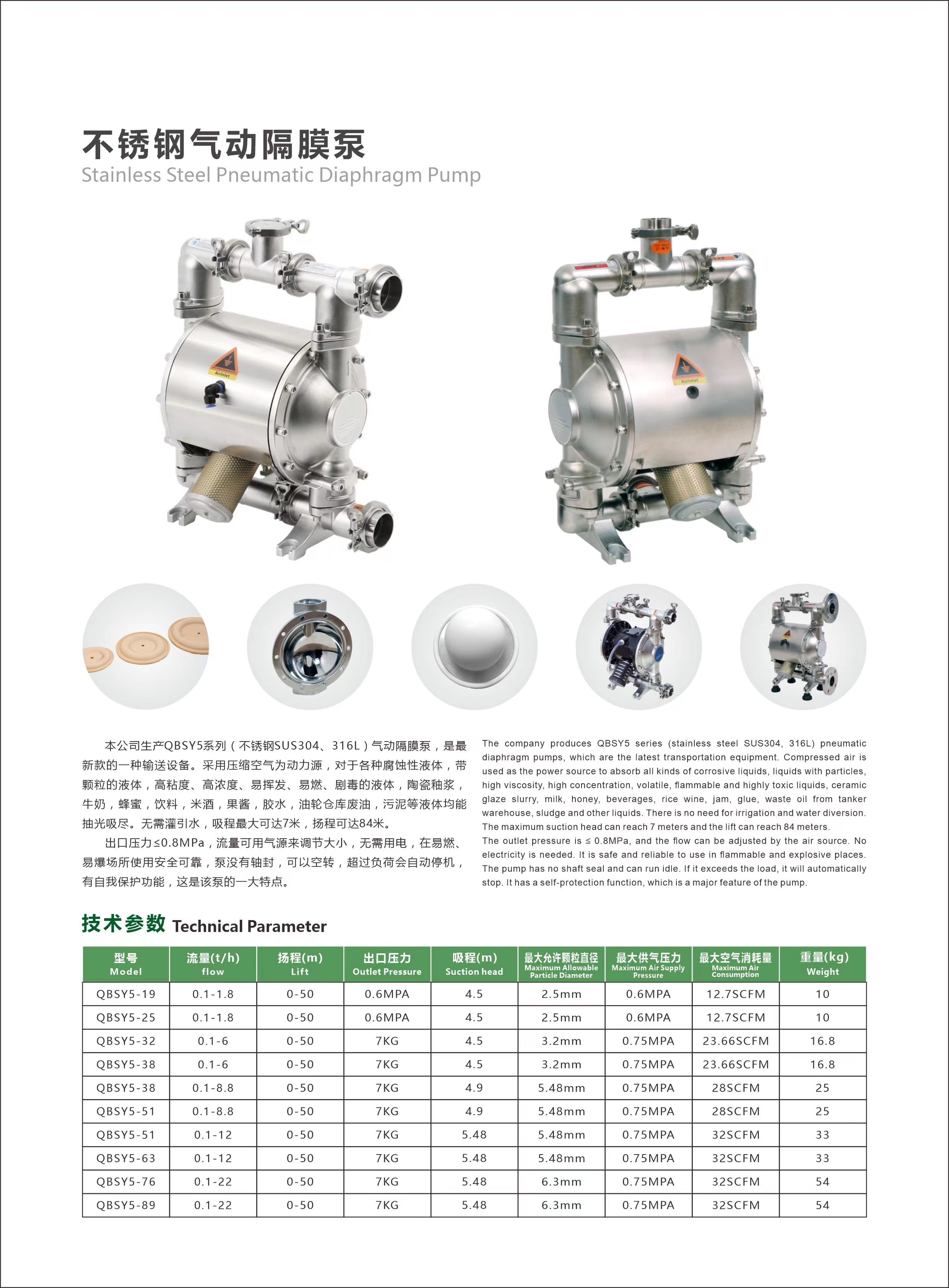| Availability: | |
|---|---|
| Quantity: | |
The main components of an emulsifying pump are housing, rotor, stator, shaft, drive mechanism, bearing and seals. These components work in harmony to achieve efficient emulsification by creating intense shear forces that result in the formation of stable and uniform emulsions.
JONENG
8481804090








Stainless Steel High Speed Movable Emulsifier Emulsion Pump with Frequency Converter
· Emulsifying pump is a type of pump designed specifically for the emulsification process. Emulsification is the process of mixing two immiscible liquids, such as oil and water, to form a stable emulsion. Emulsifying pumps play a crucial role in ensuring the efficiency and effectiveness of emulsification processes, contributing to the production of stable and homogeneous emulsions in various industrial applications.
· The main components of an emulsifying pump are housing, rotor, stator, shaft, drive mechanism, bearing and seals. These components work in harmony to achieve efficient emulsification by creating intense shear forces that result in the formation of stable and uniform emulsions.
Working Principles

· The working principle of an emulsifying pump involves the use of mechanical forces, typically generated by a rotor-stator mechanism, to create high shear forces and break down immiscible liquids into smaller droplets, ultimately forming a stable emulsion.
· Here is more detailed explanation of the working principle:
o The core of many emulsifying pumps involves a rotor-stator mechanism. The rotor is a rotating component, and the stator is a stationary component. The rotor is often equipped with blades or other features.
o The pump is powered by a drive mechanism (e.g., an electric motor or a pneumatic system), causing the rotor to rotate within the stator.
o As the rotor turns within the stator, the blades of the rotor interact with the stationary stator. This interaction creates intense shear forces in the liquid passing through the pump.
o The high shear forces generated by the rotor-stator mechanism effectively break down and disperse the immiscible liquids into smaller droplets.
o The continuous shearing action of the emulsifying pump ensures a thorough mixing of the immiscible liquids, preventing their separation and promoting the formation of a stable emulsion.
Stainless Steel Diaphragm Pump Specification Chart

Body material | AISI304/316L |
Mechanical seal | SiC/C/EPDM |
Gaskets | EPDM, PTFE |
Surface finish | Ra 0.8m |
Max. flow | 40m3/h |
Max. power | 45KW |
Max. temperatur | 140℃ |
Max. rex | 2900rpm |
Features

· Rotor-stator mechanism
· Adjustable shear forces
· Variable speed
· Ease of maintenance
· Compliance with standards
· Consistency in product quality
· Hygienic design for food and pharmaceutical application
· Adaptability to different viscosity
Application

The main application of an emulsifying pump is to create stable emulsions by effectively mixing and dispersing immiscible liquids. Emulsifying pumps find extensive use in various industries where the production of stable and uniform emulsions is a critical process requirement.

Working Principles

The diaphragm valve is consist of diaphragm, pumping chamber, sucking valve and delivery valve. There are two ways to motivate the pump: one is by air, one is by motor. An air operated diaphragm pump is a pneumatic pump that directly compresses air between two sides of the pump, back and forth. Motor operated diaphragm pump is rotating the shaft by the power generated by motor. No matter by air or by motor, they both push the force behind the diaphragm to the liquid in chamber. In this way, liquid can be raised up to discharge. The function of two diaphragm is creating a vacuum room during the process of push and pull. It realizes one side to evacuate liquid while the other side to fill up.
Feature and Specification


Stainless Steel Self-Priming Pump Specification Chart

Max. flow rate | 50m3/h |
Frequency | 50HZ/60HZ |
Max. pressure | 8 bar |
Max. temperature | 110°C |
Material | SS304/SS316L |
| Inlet/outlet connection | Clamp, Weld, Flange |
| Inlet/outlet size | 1”-3” |
| Diaphragm | PTFE, PTFE with white back, EPDM, white EPDM, white NBR |
| Driving way | Air or Motor |
Features

●The pump is designed for cleaning and sterilization in place-C.I.P. and S.I.P
● It is easy to connect because of quick assemble tri-clamp
● Wide range of diaphragm materials area available
● It is suited for transferring viscous and shear sensitive products
● The smooth design of this diaphragm eliminate potential contaminant risk
● It can accept dry run conditions
Application

The diaphragm pump is widely used in food industry, beverage industry, daily chemicals,medical industry, paper making industry and other higher sanitary requirements production.